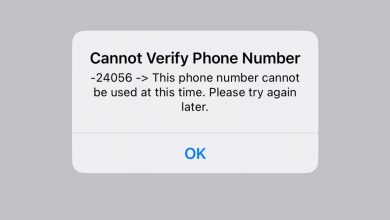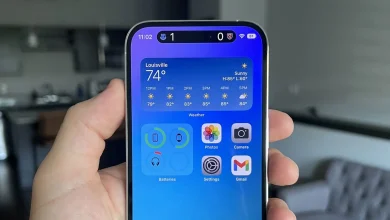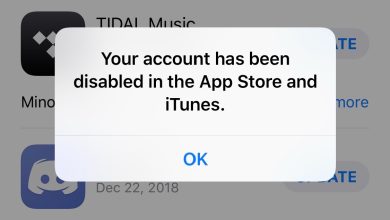How to Forward Calls on iPhone in 3 Easy Steps
- Call forwarding on an iPhone allows you to direct incoming calls to another number. It's beneficial for staying reachable, maintaining privacy, and managing work-life balance.
- Before setting up, check service availability, impact on voicemail, and understand geographical and international restrictions. To enable it, go to iPhone settings, turn on call forwarding, and set the "Forward To" number.
- For CDMA networks, use USSD codes for forwarding. An alternative to traditional forwarding is using VoIP services, which offer more features and flexibility. Call forwarding is a useful tool for various needs and situations.
Call forwarding is a handy feature that lets you redirect incoming calls from your phone to another number when you’re unable to answer or your phone is out of reach. For example, if you’re on vacation, you can have work calls sent directly to your office.
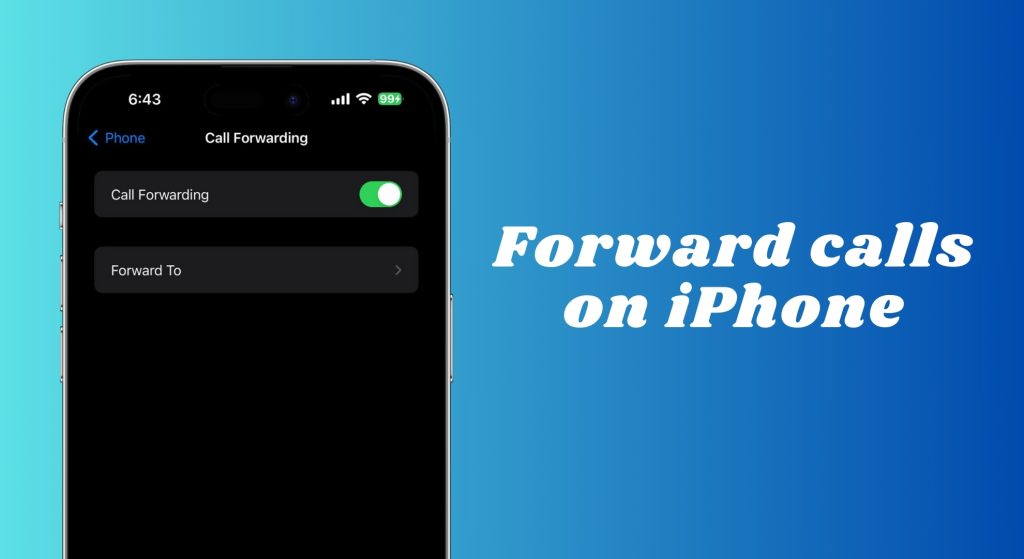
This feature allows your mobile phone to send calls to another phone, like your office or home phone, without ringing your own device. It’s easy to set up on an iPhone, compatible with most service providers, and helps manage calls when you’re busy or prefer not to be disturbed.
Setting up call forwarding on your iPhone is straightforward and ensures you don’t miss important calls, particularly when traveling to avoid roaming charges.
In this guide, we’ll explain what call forwarding is, its benefits for iPhone users, show you how to set it up step-by-step, use USSD codes for CDMA networks, and explore alternative options.
Step 1: Go to the Phone Settings
Open the Settings app on your iPhone, scroll down to find “Phone,” and tap on it.

Step 2: Turn on call Forwarding Settings
- Within the Phone settings, locate “Call Forwarding” under the Calls section and tap on it.

Tap on “Call Forwarding” - A toggle switch will appear next to “Call Forwarding.” Toggle it on.

Turn the toggle switch on
Important: If this option isn’t visible, your phone service may not support call forwarding, or you might be on an older CDMA network. In such cases, contact your service provider for further assistance.
Step 3: Setup “Forward To” number
- Once you tap Call Forwarding, “Forward To” will appear beneath it. Tap on it. If you’re using two phone lines (Dual SIM), your phone will prompt you to select one.

Tap on Forward To - A numeric keypad will be displayed. Enter the number to which you want to redirect your calls.

Enter the phone number
- After entering the number, there’s no need to look for a Save or Done button. Simply tap the Back button in the top left corner to save the number you’ve entered.
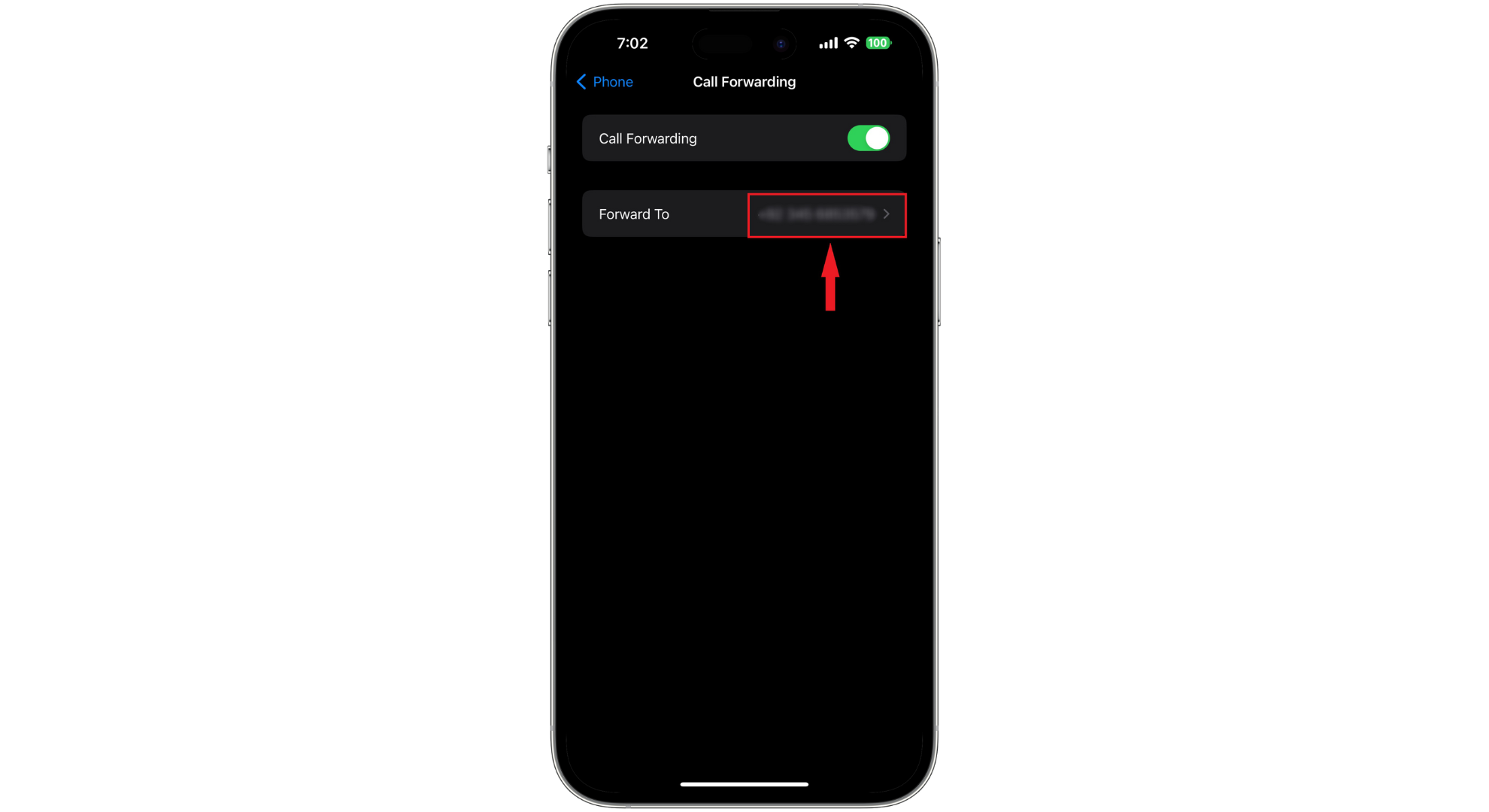
Tap the back button at the top left
You will see the number you entered next to “Forward To.” Your iPhone will now forward all your calls to the designated number.
Setup call forwarding via USSD codes (For CDMA networks)
If your iPhone is on an older CDMA network like Verizon or UScellular, you can’t enable call forwarding through the usual iPhone settings. Instead, you will use special forwarding codes, known as carrier codes, to redirect calls to another number.
Bear in mind that CDMA networks are becoming less common. Switching your SIM card to newer 4G or 5G networks could offer better service options.
Here’s how to use the codes for different carriers:
- T-mobile users: Enter **21 followed by your 10-digit number and end with a hash sign (#). Tap the call button to start. To cancel, dial ##21# and call.
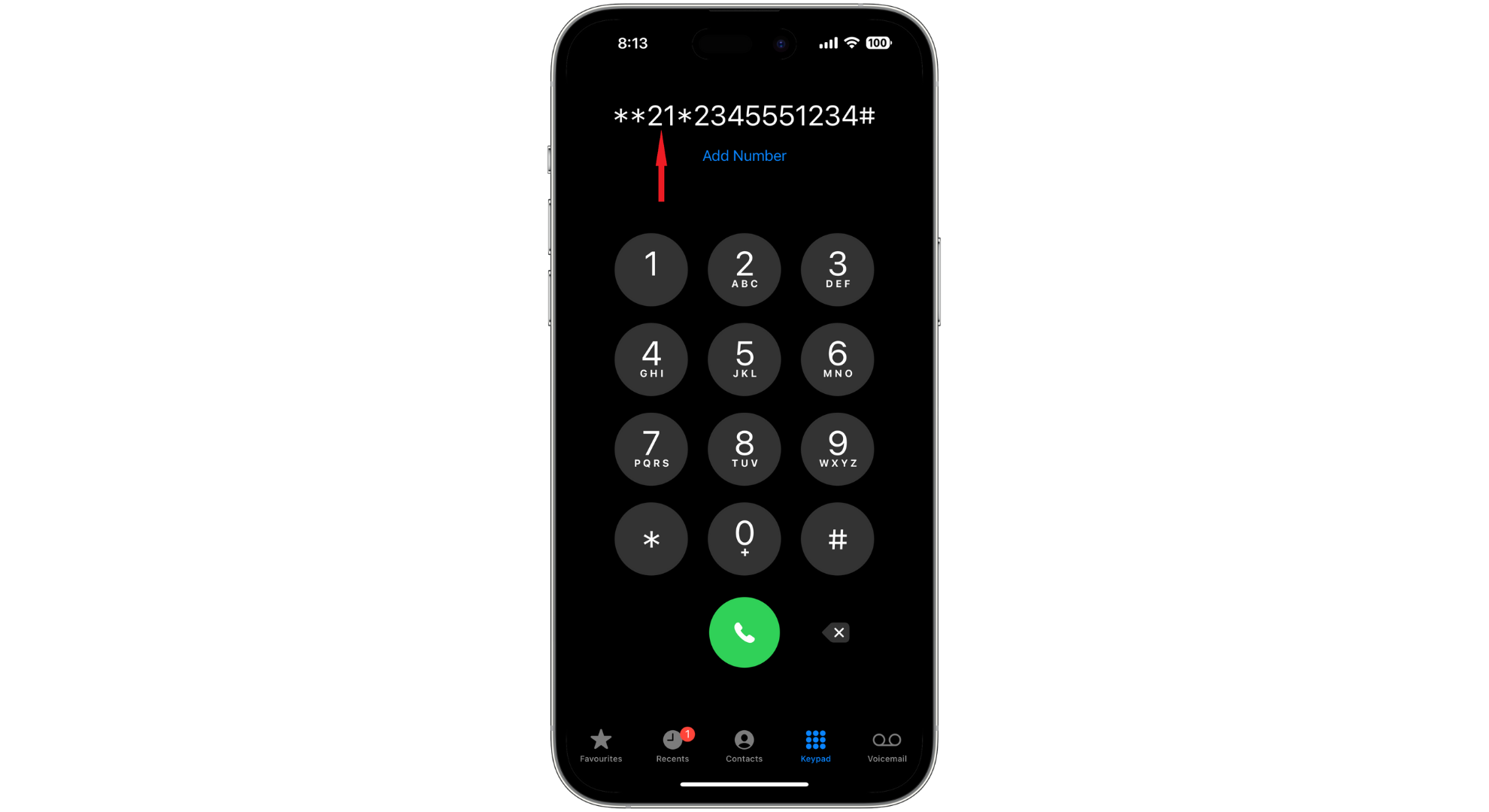
- Sprint users: To begin call forwarding, type *72, add the phone number, and make the call. To disable, dial *720.

- Verizon or UScellular users: Start with *72, dial the number you wish to forward calls to, and press the call button. To deactivate, dial *73 and call.
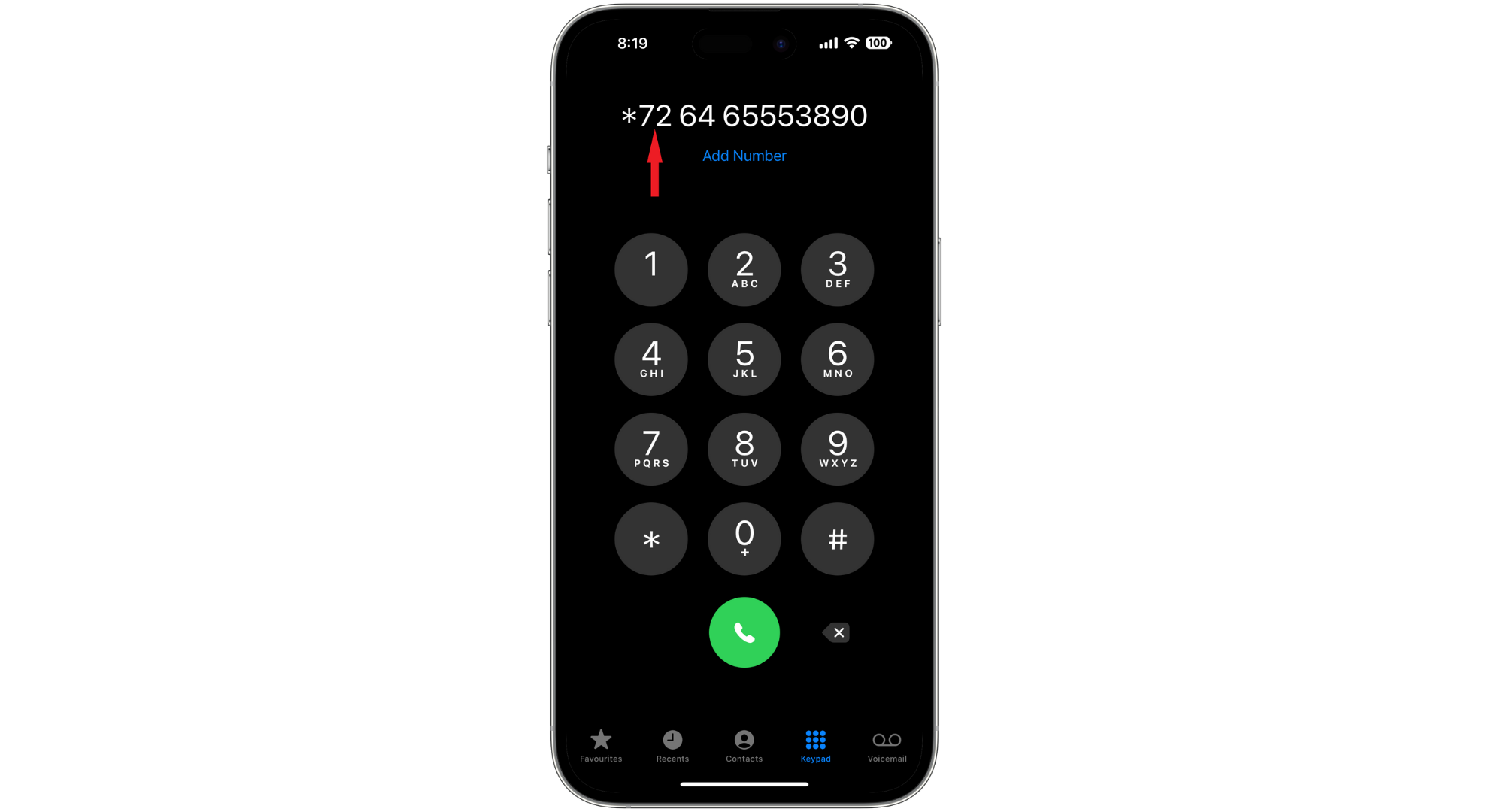
You can also use codes to forward calls under specific circumstances, like when you don’t answer, can’t be reached due to poor network coverage, or are on another call. These codes ensure you don’t miss crucial calls.
Alternative to call forwarding
There are alternative methods to handle your calls without relying on traditional forwarding. Options such as VoIP services provide flexibility and extra features for managing calls efficiently.
↪ Virtual phone numbers via VoIP phone systems

If call forwarding isn’t meeting your needs or you want more features, consider using a virtual phone number with a VoIP (Voice over Internet Protocol) system. These systems let you make and receive calls over the Internet, offering more features than traditional call-forwarding apps. However, they depend on a stable internet connection to work effectively.
iPhone users who travel often choose VoIP providers like Vonage and Skype. These services are popular for offering useful features at a reasonable cost, such as:
- Forwarding calls to international numbers.
- Creating virtual local phone numbers in locations outside the US.
- Enabling connections between computers and regular telephones (landlines).
 Reviewed by
Reviewed by 